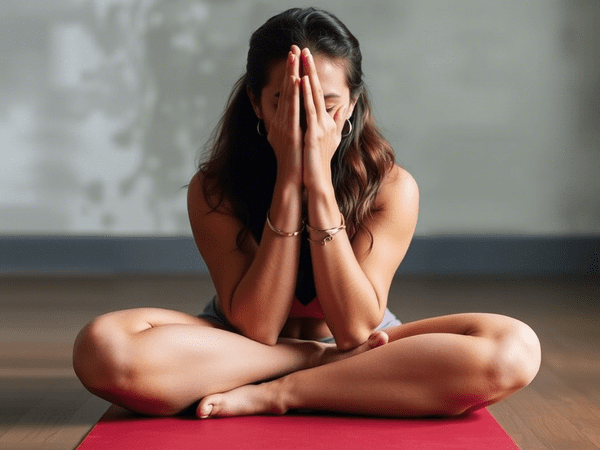5 Must-Haves for a Perfect 4th of July: Style, Food, Fun & More
5 Common Yoga Mistakes That Could Be Holding You Back

Yoga is a challenging practice that strengthens the body, increases flexibility, and sharpens the mind. However, most beginners make mistakes that frustrate them.
Failing to breathe correctly or skipping a warm-up routine will reduce the effectiveness of your practice. Learning about these mistakes and correcting them will make it easier to create a safe, long-term, and rewarding yoga practice.
Holding Your Breath Instead of Focusing on Breath Control
Breath control, or pranayama, is a crucial part of yoga that serves to connect the body and the mind. New instructors will probably leave out correct breathing in poses and instead use short, shallow breaths. This mistake slows oxygen to the muscles, makes it more difficult to relax, and diminishes the effects of every pose. Inadequate breathing can cause tension, energy loss rapidly, balance difficulty, and decreased endurance while exercising.
Mindful breathing is essential when polishing your yoga skills. Consistent, deep breathing allows smooth pose transitions, greater endurance, and focus. If you find yourself holding your breath, try the use of the Ujjayi breath. It is a slow and consistent method of breathing that produces a calming sound. Breathe in slowly through the nose, narrowing the throat, and breathe out slowly through the nose. Mindful breathing builds energy, diminishes stress, and increases awareness of movement. To avoid these mistakes, try to breathe in harmony with your movements.
For instance, inhale on stretch or lift and exhale on bend or twist. Appropriate breathing stimulates the branch of the nervous system which leads to relaxation and decreases stress. Breath monitoring increases relaxation, increases energy, and enhances yoga performance. With time, awareness of the breath becomes automatic, smoothing movement. Mastering techniques such as Ujjayi, Nadi Shodhana, and Kapalabhati help control the breath and the mind-body connection. Consistent breathing exercises in conjunction with yoga increase lung capacity and overall well-being.
Rushing Through Poses Without Proper Alignment
Good alignment is essential in yoga. It helps you to get the most out of each pose and keeps you safe from injury. This can result in body alignment problems. Busting muscle tension can be troublesome and painful for many people, and poses are less effective. It could be possible you are out of alignment if you often feel sore and tense after your yoga practice. Bodies are all different so remember to take your time and prioritize what feels best to maintain balance. Instead of always flowing like you are rushing inside a warm-up.
Take breaks between poses and check where your muscles are and how your posture looks. Once you reach your end posture, tools such as straps, blocks, or even walls for support to help create balance. It’s easier to correct your form when you can see yourself, so recording with your phone works too. A knowledgeable yoga instructor can tailor the class to your unique needs and provide the necessary assistance and encouragement.
Correct alignment counters injury boosts confidence, encourages self-assuredness, and, most essential, improves posture and body control. By maintaining proper alignment, the correct muscles in use for optimal efficiency in any pose or position assist in being backbends, forward bends, or even balance poses. As with any form of exercise, positioning is crucial for attaining both safety and effectiveness.
Comparing Yourself to Others Instead of Listening to Your Body
It is only natural to start comparing oneself to others, especially when taking a yoga class or watching accomplished yogis online. Yoga is an individual journey where everyone progresses at their speed. Trying challenging yoga poses without properly preparing the body can lead to injury, frustration, or enhanced stress levels. The keys to a successful yoga practice are self-awareness and self-acceptance. You must pay attention to your own body and its unique needs rather than seeing how others perform.
The best course of action is to adjust it to fit each person better if a position hurts or is unpleasant. Finding balance is the goal of yoga, not comparing yourself to other individuals. Being aware of your body's capabilities will benefit you personally and healthily. By focusing on your improvement, you can shift the focus from comparison to personal development.
Keeping a journal can assist you create goals, documenting minor successes, and gaining insight into your growth. By embracing their growth, individuals will probably become more confident, patient, and practice-sensitive. Instead, it is a journey of self-discovery and ongoing progress, yoga is not about reaching a particular position
Skipping Warm-Ups and Cool-Downs
Ignoring the necessity of warming up and cooling down some individuals only focus on the main workout. Ignoring significant activities can result in stiffness, a higher risk of injury, and a slower rate of muscle recovery. Gentle motions prepare for various positions in a good yoga session, and then there is a relaxing cool-down to recuperate from the pose. A proper warm-up wakes up your muscles, enhances blood flow, and assists make your joints more flexible.
Your body can be prepared for more hard positions with easy exercises like Sun Salutations, Cat-Cow stretches, and moderate twists. These warm-up exercises facilitate and secure your transition into more challenging poses. Cooling down after exercise will reduce tension, calm the body, and avoid soreness. Through Child's, Seated Forward Bend, and Savasana poses, the practice advantages are upgraded, and body relaxation is promoted.
Take a short sleep time to relax after your yoga practice to feel better and avoid aches later. Spend an extra 5 to 10 minutes before and after exercise in warm-ups and cool-downs to provide them priority. This small step will enhance your yoga practice further enhancing your health. If you warm up well and give space for your body to relax your body will gain the most benefit from your practice. In the long run, this can also assist you avoid getting tired or hurt.
Neglecting Consistency and Expecting Immediate Results
One famous myth among individuals is that instant benefits will be witnessed from yoga without continuous practice. The majority of new students are dismayed when they fail to see fast improvements in their strength, flexibility, or concentration. Yoga practice demands dedication to always effort, patience, and perseverance for long-term benefits. Individuals seek quick fixes and fast transformation in today's fast-paced world. When the instant effects of yoga are not witnessed a mentality can result in frustration.
Contrary to high-intensity training that provides superficial short-term changes in body look, yoga allows for the gradual evolution of the body, mind, and emotional state, resulting in long-term benefits. This growth occurs through persistent effort instant change cannot be achieved. Continuous practice is usually necessary to have full access to the holistic impact of yoga. Regular practice will give better results compared to random, intense practice. It is better to adhere to a routine that suits you than chase an unrealistic notion of perfection. Through regular practice, whether it takes the shape of everyday short sessions, weekly workshops, or mindfulness exercises, strength, flexibility, and mental clarity are gradually developed.
Additionally, yoga promotes patience and persistence. You should realize that every little step counts if your development is sluggish. Savor small victories in yoga, like extending the duration of a pose, enhancing breath control, and feeling more relaxed. You will see notable shifts in your thinking and bodily sensations after a while. You experience an increase in energy, tranquility, and awareness when you view yoga as a journey rather than a destination. Keep going, trust the process, and let yourself change over time as a result of your daily practice.
Conclusion
Yoga is about growth over time and a better understanding of who you are, not about being flawless. By paying attention to your breathing, keeping your posture correct, and practicing attentively, you can get the most out of your practice. Avoid rushing, comparing yourself to others, and anticipating immediate results.
It takes time and effort to make real growth. Yoga can assist you in maintaining your physical and mental health for the rest of your life. Let yourself grow and learn at your own pace. By maintaining consistency and focus, which will provide your practice more meaning strength, flexibility, and inner serenity will all be improved.








